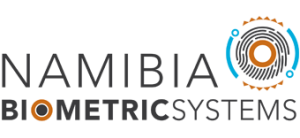Why Biometrics in Military
The Military is a core unit of most governments authorised to use deadly force and weapons, to support the interests of the country and its citizens. The task of the Military is to defend the State, its citizens and the prosecution of war against another State. In addition, the Military may have additional functions within a society such as the promotion of a political agenda, protecting corporate economic interests, internal population control, construction, emergency services, social ceremonies, guarding important areas, etc. The Military further employees thousands and thousands of tax paying citizens. The role of the Military can be seen as the security spine of many nations. Therefore, it is critical that the security system for the Military is as solid as it can be.
In a unfortunate case that the Military goes to war in response to protecting its citizens from external attacks, sending troops with traditional methods of soldier identification is likely to result in the following limitations:
Soldier Identification – It is likely that some soldiers may get life changing injuries and some may even lose their lives. The Military has commitment toward positive identification and proper burial of the dead. The Military may have sent thousands of troops from different units in addition to allied troops who might not even know each other. The allied troops will require a common way of identification for injured or soldieries who lose their lives in order to avoid intrusion from the enemy. The enemy soldiers are likely to wear the allied troops’ uniform should they try to infiltrate the allied forces. It is clear that traditional methods of Military identification using uniform or dog tags to identify soldiers can easily be breached as dog tags can be lost, stolen or both uniform and dog tags can be switched. Biometric circumvents the limitations mentioned above. Injured soldieries can conveniently and efficiently be identified.
Soldier Counting and Resource Management – It is likely that some of the soldiers may risk been left behind in the war zone if the Military is using traditional means of identification and counting. Biometrics solutions can provide enhanced methods of registering and counting soldiers. For example, soldiers who have lost their lives can quickly be registered by their colleagues by simply clicking their fingerprint on the biometric reader, similarly for injured soldiers and thus the Military can manage their resources efficiently. This is a powerful tool is winning any war.
More information on the implementation of biometrics based solutions can be requested from info@namibiabiometricsystems.com.
